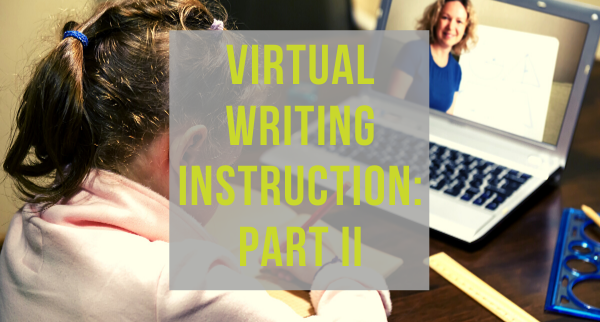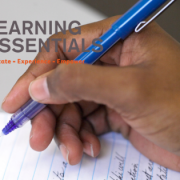Virtual Writing Instruction: Part II
In addition to providing cross-curricular writing opportunities, arranging activities that encourage peer feedback, and building in time for formative writing assessment, educators can also capitalize on one highly underrated teaching strategy: student choice. When at all possible, I try to provide my students with latitude for their written responses and essays. Of course, with a curriculum to follow, grade books to align, and cohorts that prefer to plan in “lock-step,” this is much easier said than done. Therefore, I make a concerted effort to plan for student choice when designing the writing tasks, as well as the instructional lessons leading up to those tasks.
Below are several methods for implementing student choice while providing writing instruction:
- Set up a NoRedInk classroom for students to join, explore, and practice various aspects of sentence structure, punctuation, grammar, etc. The platform is set up for self-directed, student-driven, asynchronous work. Therefore, the activity options in NoRedInk can provide students with interventions, scaffolds, and supports, as well as enrichment and rigor for those working ahead of the group.
- NoRedInk allows students to choose from grammatical, sentence-level practices, standardized English prompts, and guided essay support. They can also participate in peer or self-review, depending on their level of comfort with collaborative feedback.
- One of my favorite warm-up activities is to provide students with several gifs on a Google slide. I try to choose gifs that relate to students and their interests, such as The Weeknd’s Superbowl Halftime performance or the latest State Farm commercial. They get to choose the gif they’d like to caption. Then they must incorporate a sentence structure or grammatical concept that we’ve recently discussed in class somewhere in their caption. Not only do students get to pick the gif they want to caption, but they also get the opportunity to demonstrate their knowledge of subordinating conjunctions, for example. Like an exit or entry ticket, teachers can quickly sift through the gif response to make sure that clauses are punctuated correctly and that students are understanding the purpose of the dependent clause in relation to the independent clause.
- For writing instruction involving essay revision, teacher feedback, or peer edits, ask students to consider which section or paragraph of their essay they’d like to really rework or revise. Teachers can then use strategic grouping to organize students into groups with peers who are looking to revise the same portion of their essays. This streamlines teacher feedback, allows students to view one another’s work, and opens up the learning space for discourse around different writing techniques and components.
- I might organize small groups as follows:
- Group 1 should be students who would like support/guidance with the thesis statement.
- Group 2 should include students who need help finding appropriate quotes from the text or texts.
- Group 3 should consist of students who need support with a concluding paragraph and/or transitions between paragraphs.
- Group 4 should be for students who need help with elaborating on their analysis or further developing their own explanations.
Student choice with writing samples/models:
- Providing teacher models at the beginning of a new writing task is another beneficial strategy for incorporating student choice. Depending on the writing task, teachers should find (or create) a few various examples of the final essay or product for students to read and review.
- These samples can also include student essays from previous years. Provide students with options and require them to read, review, and assess at least one of the sample essays. This activity serves several purposes—it allows students to see how others have approached the essay prompt, either successfully or unsuccessfully, depending on the samples you collect. It also shows teachers if students truly understand the criteria for success after viewing a teacher model or student sample.
- If students review a mediocre or poor essay model as “great” or “topnotch work,” then teachers immediately see that they have missed the mark on fully explaining the task and the learning goals attached. Conversely, if students are unable to articulate why the model essay was unsuccessful or sound, then they truly do not know how to approach the task successfully either.





